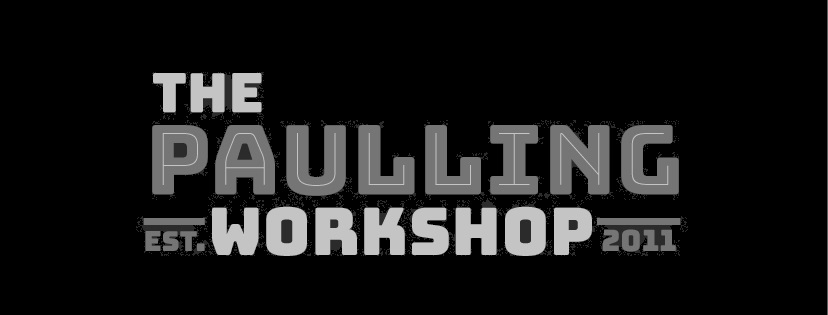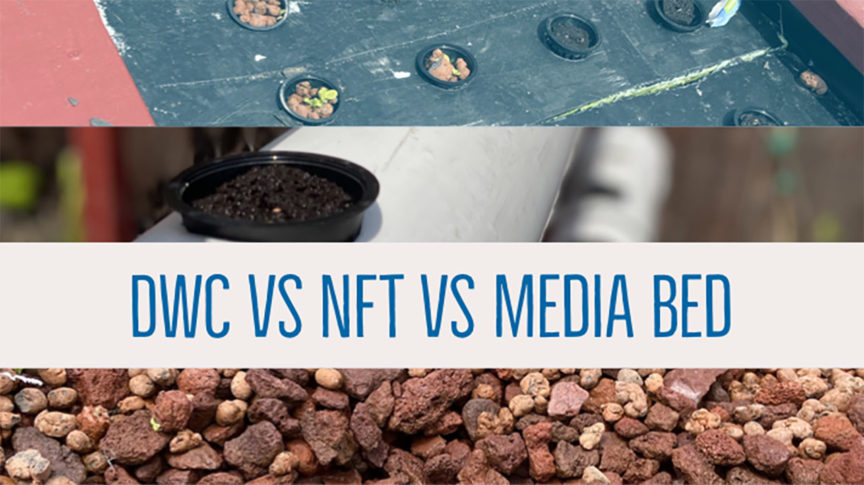In this post, I want to examine the various types of grow container styles in hydroponic and aquaponic systems, discuss the differences, and go through the pros and cons of each style.
First of all, definitions:
DWC = Deep Water Culture
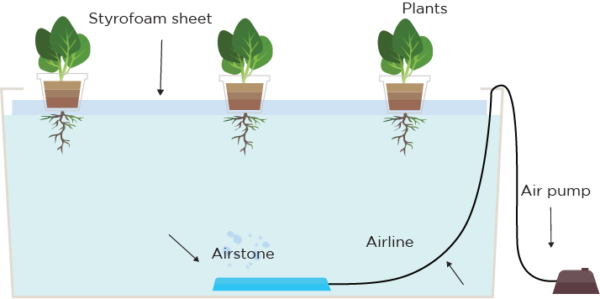


Deep water culture is one of the simplest methods, as it has no moving parts. In this system, you have a basin of water (5 gallon buckets are very common), and a floating raft (typically Styrofoam) with 2-3″ diameter holes cut for plastic net pots. The net pots sit in the floating raft, are filled with an inert growing media like clay pellets or Rockwool cubes, and are in constant contact with the water. As the plant grows, the roots will extend down into the nutrient solution. An air pump and air stone under the roots will provide circulating oxygen in the water.
One variant of DWC is called the Kratky method, which allows the plant to consume the water without being refilled and where the roots will continue to grow downward into the container. This does not require the air pump as there is now an air pocket around roughly 50% of the roots all the time.
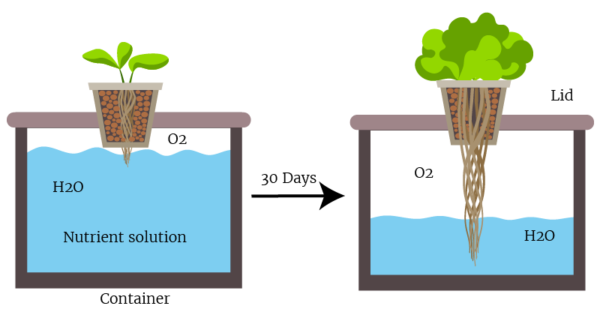


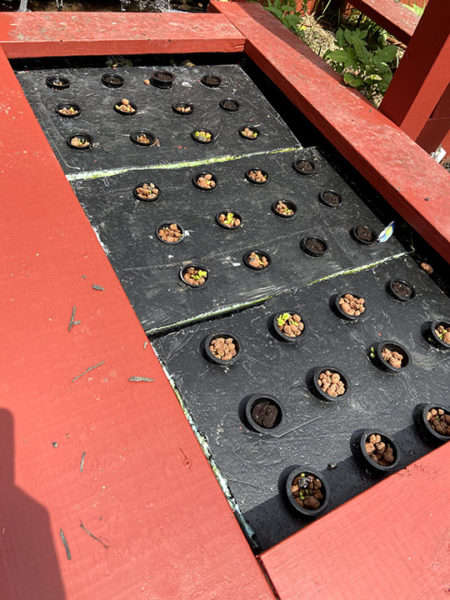


NFT = Nutrient Film Technique
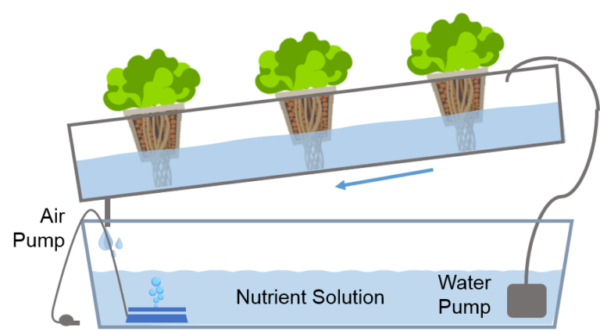


Instead of a deep reservoir of water, NFT systems have a thin channel water flows down continuously, carrying nutrients from plant to plant as it passes. The water is recirculated continuously from the tank through the channels, and roots from the plants grown down into the channel to meet the flow of water. As a target, 1 liter of water flowing past the roots each minute will provide enough nutrients and oxygen to each plant.
In this system, the only moving part is a water pump (vs the air pump in the DWC system). Water is pumped to the top of the channel system and flows via gravity and a very small slope back down to the sump tank.
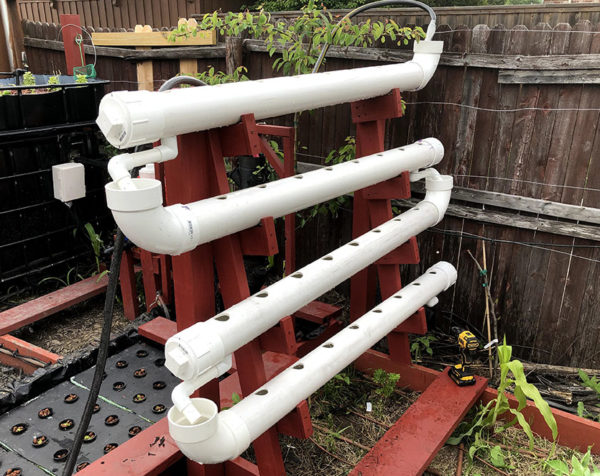


Media Beds = Flood and Drain, Ebb and Flow
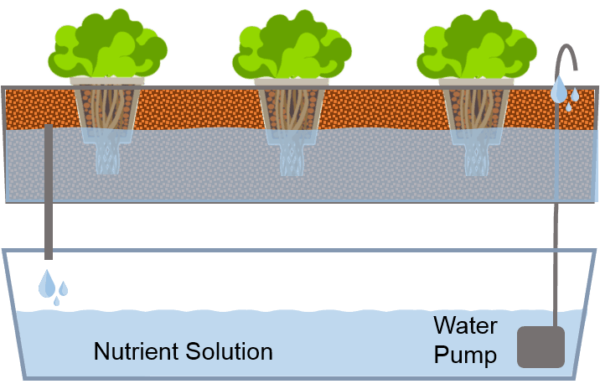


Grow beds are setup above a water tank, and a pump moves water into the bed. This water drains back into the sump in one of two ways:
- The overflow pipe has holes that constantly drain, and the pump is on a timer. The pump will run full on for 15 minutes, then turn off to allow the bed to drain fully, then repeat the cycle every hour or so, or
- The pump will run continuously 24/7, and the overflow pipe is some kind of siphon. I use a U-siphon, but probably the most common style is known as a Bell Siphon. These siphons activate when water begins to flow over the inlet and can drain the bed much more quickly than the pump can fill it.
Either way, the level of water constantly is going up and down in the system, giving the plants alternating oxygen and water/nutrient solution.
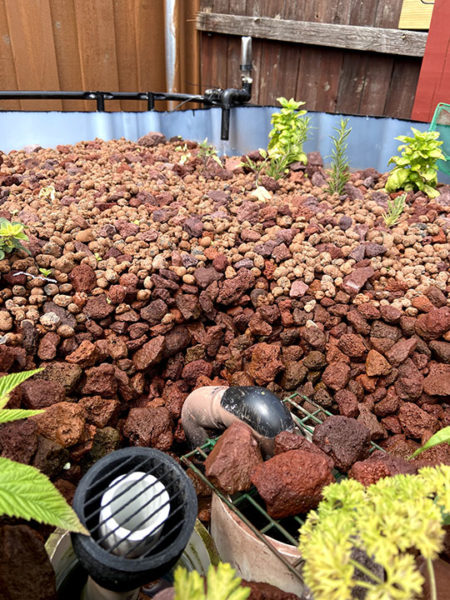


Pro’s and Con’s
Deep Water Culture Pros:
- Simple setup and fewest moving parts (usually just an air pump)
- Power outages are not as dangerous to the plants as water is always in reach.
- Plant growth is much quicker. Lettuce can be grown and harvested in 30 days vs the 60 days required for soil based systems.
- Very little maintenance. Almost a set it and forget it system.
- Cheapest system to setup.
Deep Water Culture Cons:
- If an air pump burns out or loses power, roots can begin to rot if there is not exposure to other sources of oxygen.
- Water temperature may be difficult to maintain if the reservoir is small (5 gallon bucket method)
- Nutrient concentration, water level, and pH may fluctuate and need to be checked.
- Passive systems (no water flow) create slower growth than other hydroponic systems (still faster than soil).
- Does not work well for large, heavy plants, as the floating raft may not support the weight. Typically works best with lettuce, bok choy, spinach, etc.
Nutrient Film Technique Pros:
- NFT systems are one of the most cost effective hydroponic setups, and one of the least expensive to run.
- Excess nutrient solution continues to circulate
- Minimal growing medium is necessary
- Incredibly space efficient and multiple rows can be grown vertically above one another
- Great oxygen flow
Nutrient Film Technique Cons:
- With an improperly designed system, power failure can be catastrophic to the plants in a VERY short amount of time. Unless the channels are designed to hold some water at all times, the roots can dry out in a matter of minutes.
- Overgrown roots can clog the channel, preventing water from reaching plants further down the line.
Flood and Drain Pros:
- Media beds act as a growth area for nitrifying bacteria, which can be very beneficial for water quality, especially if you want to convert to an aquaponic system.
- One of the most popular home setups and there is a ton of information about how to build these online, other than this site 😉
- Highly customizable
- Can support larger, heavier plants with more expansive root systems.
Flood and Drain Cons:
- Requires either a timer to regulate filling or a siphon to flush the water out. Siphons can be tricky to setup and there must be a backup plan in place if they don’t trigger.
- Media costs can be high, especially if using hydroton clay pellets.
- Media will need to be cleaned at least annually.
Conclusions:
Honestly, these all sounded very interesting to me and I tailored my system to include a little bit of all three types. Future posts will get into the specifics of each section, and we’ll see which of the areas ends up working the best for me. Stay tuned for our results.
